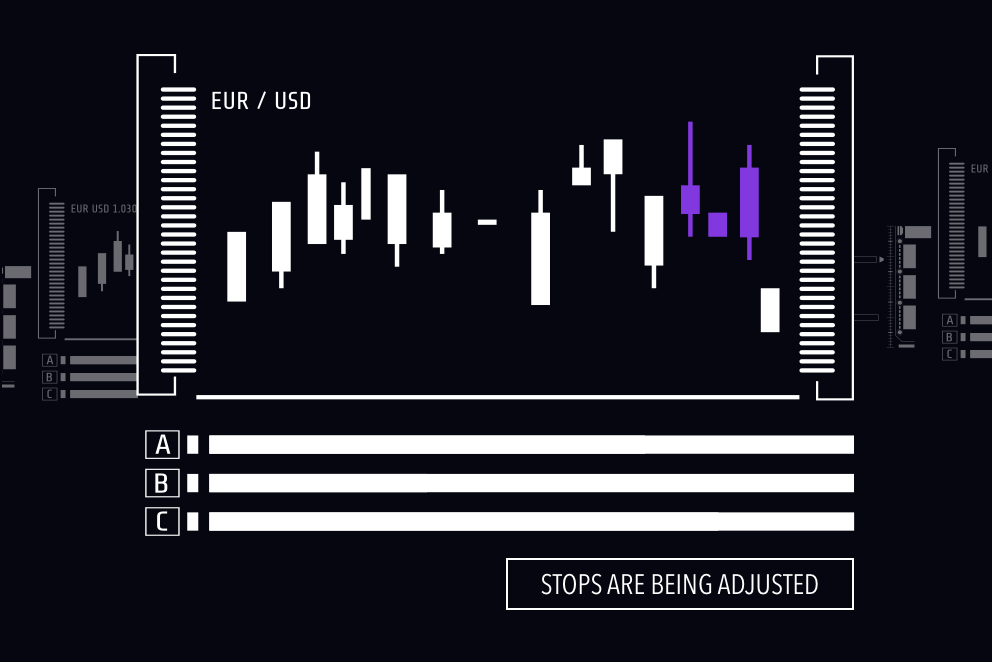Risk management is automatic
Losses are an unavoidable part of trading, even in 2069. But in my recent trip to the future, I discovered that advancements in automation, artificial intelligence (AI) and brain-stimulation technology have transformed how financial professionals manage their risk.
Traders benefit from automatic hedging
In 2069, hedging is still a very popular risk-management strategy, but the process can be fully automated thanks to artificially-intelligent assistants (AIAs) – meaning traders can protect their existing trades with very little manual input.
These robotic assistants are accessible through most mainstream platforms, and can be communicated with through 'thought-powered trading' (TPT) technology or natural-language voice commands. Not only can these AIAs give traders advice on potential hedging strategies, but they can identify inversely correlated markets and execute trades on their behalf.
And because AIAs are capable of trading with zero latency, hedging can be carried out quickly and efficiently, taking the trader’s risk-to-reward ratio into account. Although financial risk is by no means eradicated completely, many of the challenges are solved by automatic hedging.
AI provides holistic management of risk
The wide range of asset classes available in 2069 means that the types of market risk have also evolved, creating new problems and demanding new solutions. The rise of strategic technical analysis has created algorithms and indicators that can identify the most profitable strategy for each market – and this includes how to set stops and limits.
Although stops and limits work in a very similar way in the future as they do in the present day, the key difference is that AIAs will take the profit and loss for a trader’s entire portfolio into consideration, and adjust individual trades depending on the desired risk profile. For example, a trailing stop not only moves based on the market price but on the current balance of other positions.

AIAs monitor these changes and will alert the trader to shifts in the market condition and any altered positions. This means that traders can manually take control at any given time, but many prefer the freedom that comes with automation.
Traders can manage emotionally-induced risk
Perhaps the largest trend in risk management is the introduction of brain-machine interfaces (BMIs) that can be used to control the impact of negative emotions and inhibit poor choices.
Throughout a trader’s time on the markets, their vitals will be monitored to ensure they remain at functional levels. If the BMI technology detects harmful emotions, such as greed or fear, it can automatically take action to control the trade, ensuring that it is executed according to the individual’s strategy. This technology has become so advanced that traders can be locked out of their platform if they are deemed to be overly emotional or irrational.
Could this really happen?
With time travel known to disrupt the space-time continuum, our experts take a look at how likely it is that these events will come to pass…
The view from 2019
Many traders already use automated trading systems, which allow computers to execute and monitor positions on their behalf, based on specific criteria. So, it is not beyond the realms of possibility that AI could become involved in this process or develop to such a point that it can manage risk with minimal manual input.
In fact, McKinsey has already conducted research into the growing experimentation with machine learning, and has noted that automated decision making can help to remove bias from risk management functions in finance. Many possible applications of AI and robotics are being considered, but it remains to be seen how regulators are going to ensure they are used in the most appropriate way.
A handful of companies are already engaged in the race to develop AI chips and create advanced digital assistants capable of conversing with humans and performing tasks – rather than the simplistic voice-assistants currently on the market. The competition is not just between large-cap companies, such as Facebook, Google, Amazon and Apple, but dozens of tech startups.


